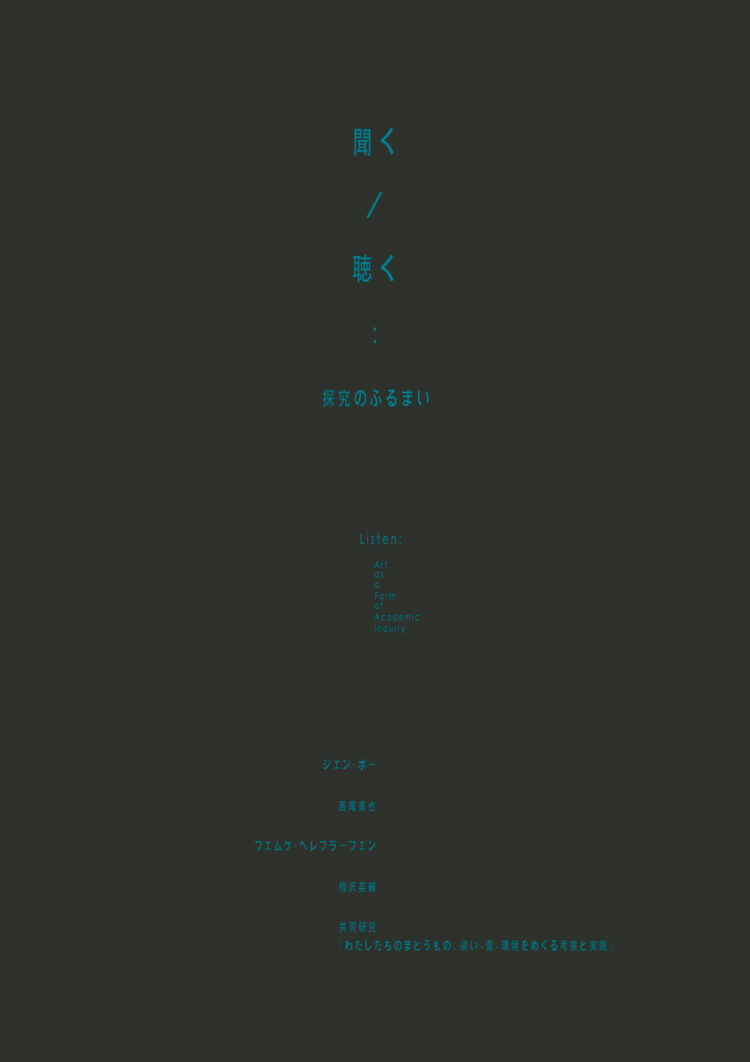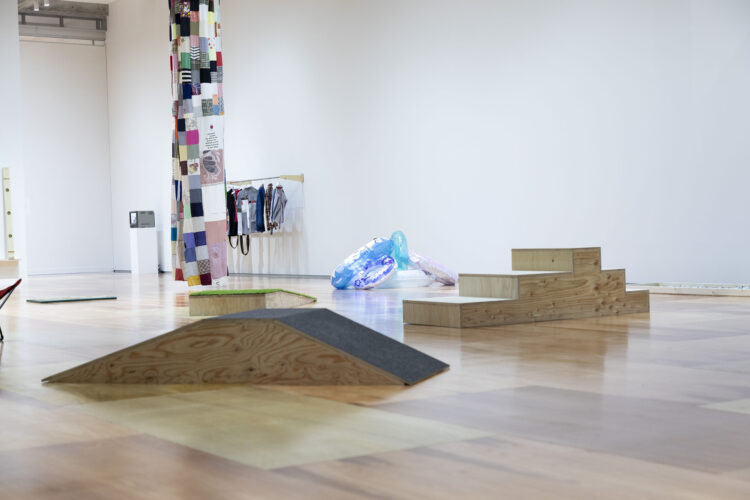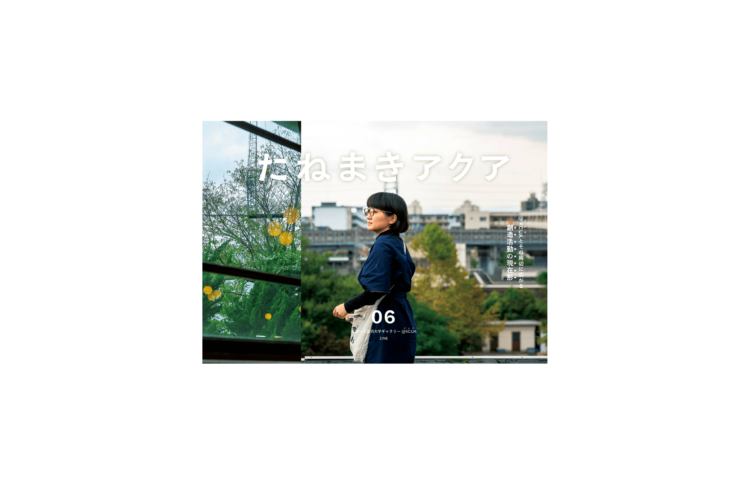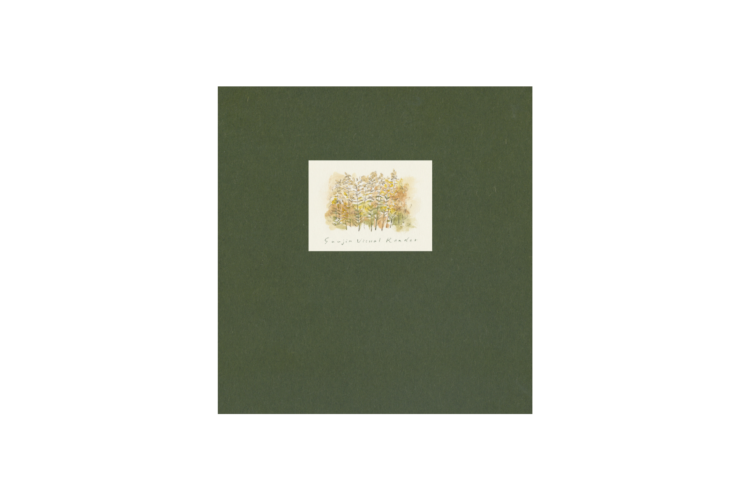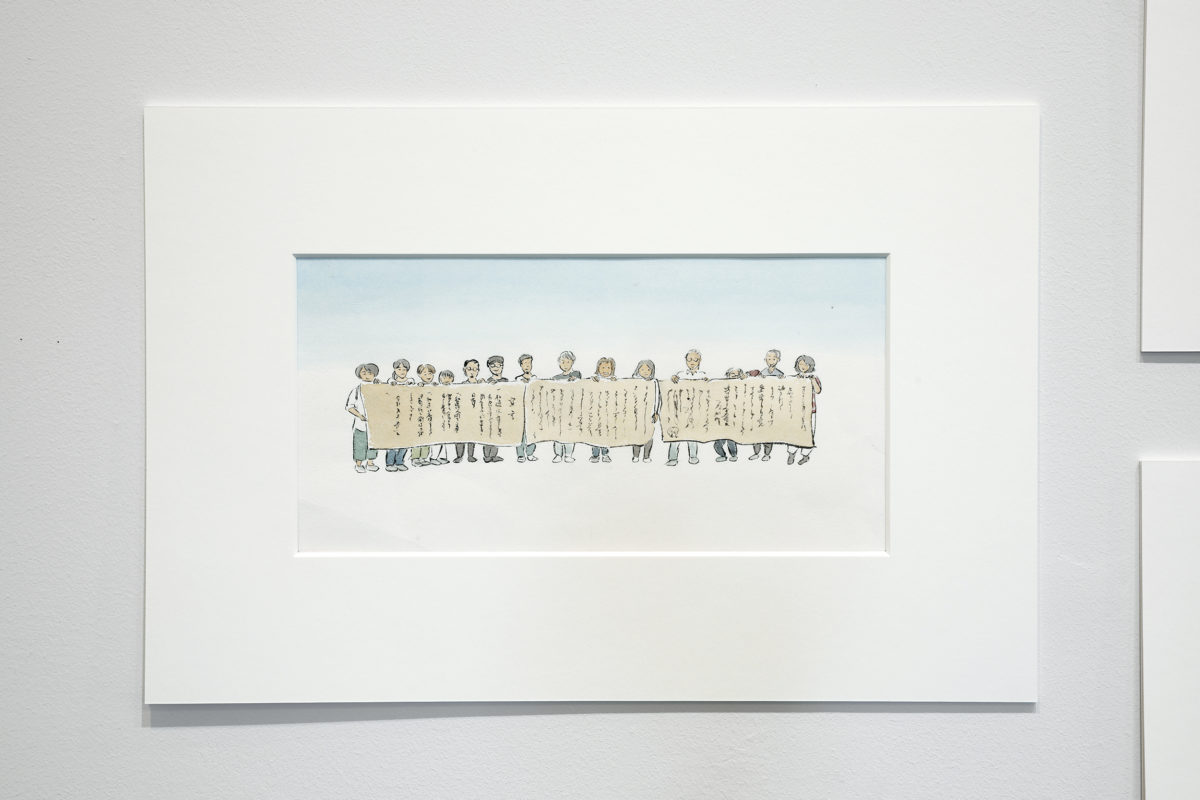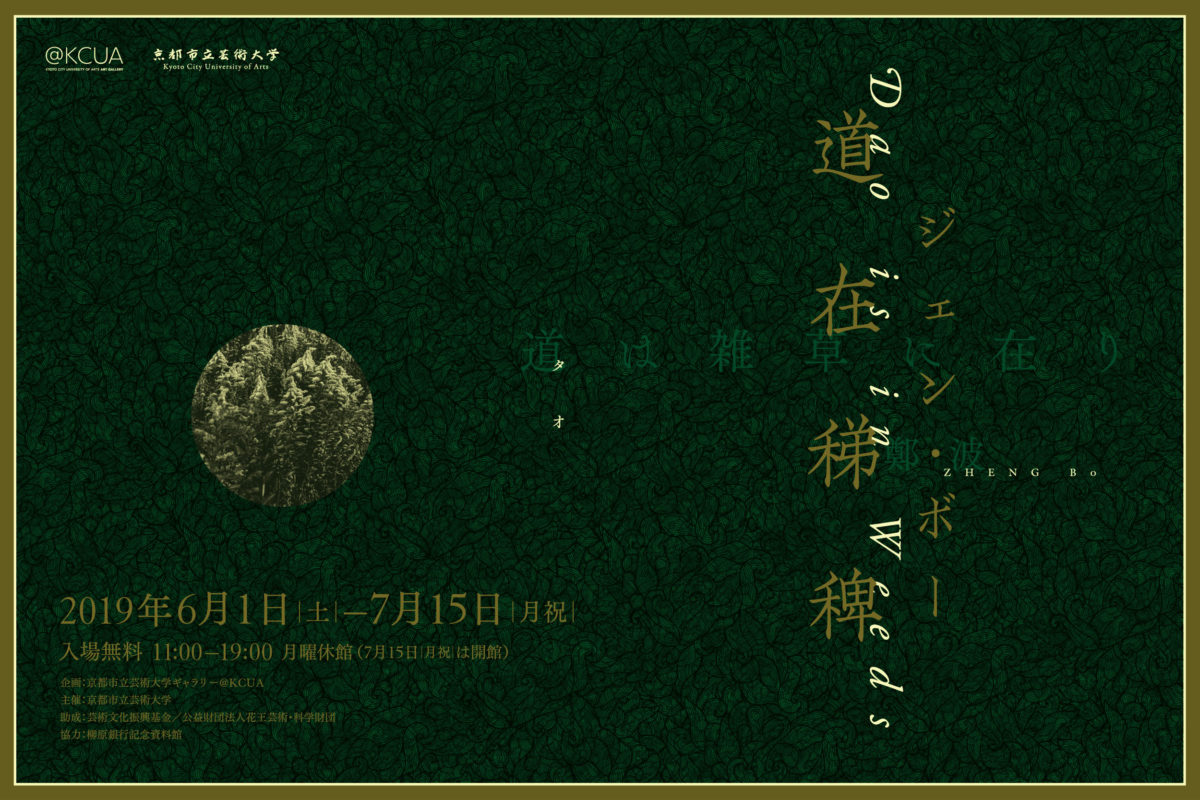SPECIAL EXHIBITIONS
Listen: Art as a Form of Academic Inquiry
The Japanese verb kiku has various meanings. It can denote to perceive a sound or voice through the ear, to accept, to ask, and to listen. Another meaning is to distinguish and identify something using senses not limited to the aural. All of these forms of kiku share the concept of perceiving and receiving information. And when we try to find out more about this information, “hearing” evolves into “listening.” That marks the start of inquiry, and is a sign of how the relationship between the sender and receiver of information increasingly deepens.
This project focuses on artistic practices that emerge from inquiries departing from the idea of hearing/listening, and explores their approaches and potential.
The exhibition opens with a section related to Things We Wear: Ideas and Practices for Clothing, Sound, and Environment, a joint research effort by the artist and fashion designer Yoshinari Nishio, sound culture scholar and sound artist Eisuke Yanagisawa, and the exhibition curator, broadly interpreting the concept of clothing and communication, and framing analysis through the relationship between sound and environments. In addition to Nishio and Yanagisawa’s work based on the research theme, there are exhibits of the research process, including actions and studies by Kyoto City University of Arts and Tokyo University of the Arts students, and an experimentation area where anyone can participate in the research.
As examples of academic artistic practices overseas related to hearing/listening, the exhibition features the recent work of the Netherlands-based Femke Herregraven, who completed a new doctorate supporting artist research called Creator Doctus. Herregraven’s exhibit deals with the complex interplay of voice, prediction, AI, illness, community, and death. The exhibition also includes a series by the Hong Kong–based artist Zheng Bo, created in collaboration with two scientists who specialize in biodiversity, soil ecology, and the environmental adaptation of plants.
(Translated by William Andrews)
- MORE
- Artists
- Femke HerregravenYoshinari NishioEisuke YanagisawaZHENG Bo
- Venue
- Kyoto City University of Arts Art Gallery
- Dates
- 2024.8.24 Sat.–2024.10.14 Mon.
- Organized by
- Kyoto City University of Arts
- With additional funding from
- Nomura Foundation
- With the cooperation of
- Kioku Shugei-kan Tansu
NISHINARI YOSHIO
- Curated by
- Mizuho Fujita (Chief Curator/Program Director, KCUA Art Gallery)
- Contact
-
Kyoto City University of Arts Art Gallery
Phone: +81-(0)75-585-2010
Please send your inquiry from the form.
Resource
Resources
Videos
Artist Profiles
Artist Profiles
- ZHENG Bo
- ZHENG Bo is an ecoqueer artist of ethnic Bai heritage. Through drawing, dance and film, they cultivate kinship with plants: ferns in Taiwan, moss in Scandinavia, beech trees in Germany, an umbrella thorn acacia in the Arabian Desert. For them, art does not arise from human creativity, but more-than-human intimacy. Their ecological practice contributes to an emergent planetary indigeneity.
Recent projects include solo exhibitions at Gropius Bau and Göteborgs Konsthall, public commissions at Somerset House and Jameel Arts Centre, and participation in the 59th Venice Biennale. Their works are in the collections of Tate Modern, Power Station of Art, and Hammer Museum, among others.
- Yoshinari Nishio
- Artist, fashion designer / Associate Professor, Department of Intermedia Art, Tokyo University of the Arts
Born in Nara Prefecture in 1982, Yoshinari Nishio’s practice explores social sculpture and performance art. His projects in Japan and around the world have focused on the relationship between clothing and communication. He is also the head of the fashion brand NISHINARI YOSHIO. Nishio’s recent work has seen him engage in a practice-based inquiry into the role art plays in society through a range of projects and educational activities, examining the possibilities for art to help us learn from one another.
- Femke Herregraven
- Femke Herregraven investigates which material base, geographies, and value systems are carved out by financial technologies and infrastructures. Her work focuses on the effects of abstract value systems on landscapes, ecosystems, historiography and individual lives. This research is the basis for the conception of new characters, stories, objects, sculptures, sound, and mixed-media installations. Her recent work focuses on the financialization of the future as a ‘catastrophe’ and uses sound, the respiratory system, landscapes, language and code to examine how these calculated and monetized eventualities affect our social, biological, and technological ecosystems. In 2016, she collaborated with Dutch investigative journalists on the Panama Papers. She is an alumnus of the Rijksakademie van beeldende kunsten in Amsterdam (2017–2018). She is part of On-Trade-Off: a transnational artist-led project on the lithium extraction in the DRC. She was shortlisted for the 2019 Prix de Rome, and was awarded the Evens Arts Prize 2023.
- Eisuke Yanagisawa
- Eisuke Yanagisawa is an ethnographer, field recordist, and filmmaker based in Kyoto, Japan. He is especially interested in listening to and recording the tone and resonance of particular places, as well as exploring their sounds from cultural, ecological, geographical, acoustic, and historical perspectives. The process involves observing and capturing tiny, hidden, and inaudible sounds using various types of microphones. Since 2006, his main research focus has been on the Gong Culture of ethnic minorities living in the Central Highlands of Vietnam. His audiovisual works have been exhibited/screened at various film festivals and museums around the world in countries such as Canada, India, Estonia, Taiwan, the UK, Italy, Germany, the US, Brazil, Japan and others.
- Things We Wear: Ideas and Practices for Clothing, Sound, and Environment (Joint Research Project)
- Adopting interdisciplinary approaches from anthropology and art, this joint research project broadly interprets clothing and communication to examine them in terms of the relationship between sound and environment. The members of the project are Yoshinari Nishio, Eisuke Yanagisawa, and Mizuho Fujita. It aspires to open up new possibilities for art research, including the expansion of academic research methods and assessment in the field of artistic practice.


